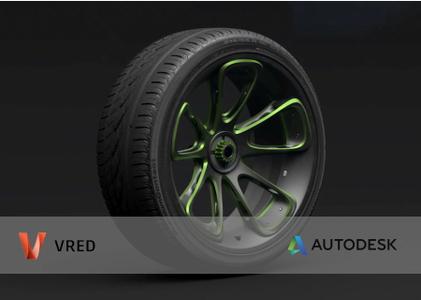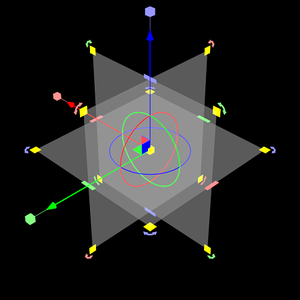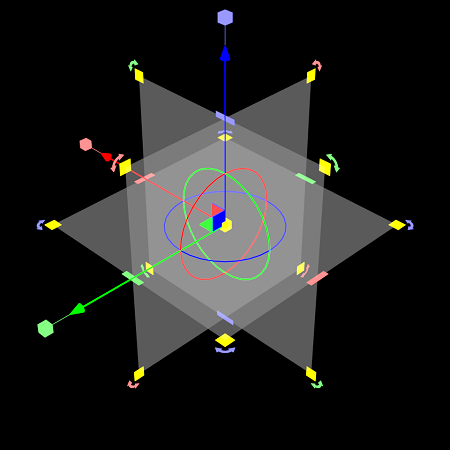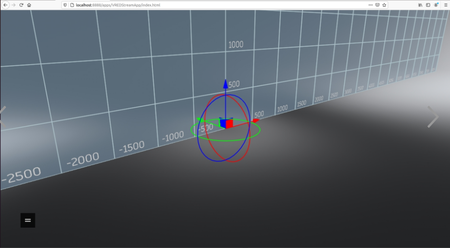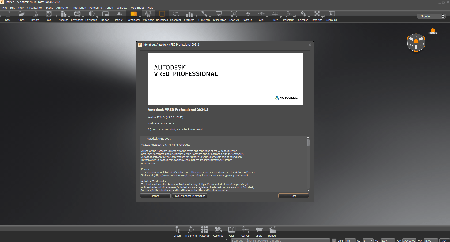Autodesk VRED Products 2021.3 official release | 6.6 Gb
The Autodesk solutions for Digital Prototyping development team is pleased to announce the availability of Autodesk VRED Products 2021.3. New release provides continued enhancements on existing functionality, as well as addressing issues as reported by our customers.
These enhancements include interactivity with the depth of field for rendering, Ambient Occlusion, further UV Editor improvements, and more options for our streaming capability and app. We also provide access to our Python API v2.0, giving you the power to create your own custom environments within VRED.
There are a total of 7 new features, 13 improvements and 32 fixes addressed in this release, almost double that of the previous release across the board.
Streaming Improvements
In the streaming app, you can now set yourself as a presenter and others as viewers, take snapshots of the field of view for collaboration, and share with your team. You can also create your own web interface with options like color and environment, and layer multiple scenes to compare vehicles.
Interactive Depth of Field
This feature works for both Open GL and CPU Raytracing. The interactive functionality includes an “Auto Focus” option, giving you a more realistic feel to your real-time scenes.
Screen Space Ambient Occlusion
More settings for Ambient Occlusion give you better control and quality of images, especially animations.
Requirement for VRED 2021.3
The following is required for VRED 2021.3:
- Nvidia v.441.66 (or higher) driver - Due to the introduction of GPU Ray Tracing, we recommend the use of the Nvidia driver version 441.66 (or higher).
New Features and Enhancements for VRED 2021.3
Improvements for VRED 2021.3
These are other improvements found in 2021.3:
- Reverse Z Buffer - Implemented reverse Z-Buffer to reduce Z-fighting issues when rendering.
- -edit_preferences - Allows the configuration of a WebInterface or other VRED Core parameters through the preferences. Use the VREDServerNode and VRED Core -edit_preferences parameter to open the Preference Editor without a UI and replace the VRED Core preference file with the VRED Professional one.
- Improved Stream Management - Refactored the code of native JPEG & H264 stream to support the improved stream management for touch devices and fullscreen displays. If the H264 codec is not installed, an error appears.
- Faster Stillframe Antialiasing in OpenGL on GPU - Does stillframe antialiasing in OpenGL on the GPU, which is much faster.
- OpenH264 Codec - Added support for the latest Cisco OpenH264 v2.0.0, v2.1.0, and v2.1.1 codecs required for H264 web streaming available from the official Cisco GitHub page.
- Presenter and Viewer - Added Presenter and Viewer modes to the Collaboration section in VRED StreamApp.
- Web Interface Redesign - Redesigned the Steam App user interface.
- Manipulate - Added a triplanar texture manipulator (use the Manipulate button) to the Projection section of the UV Editor.
- Python Types - These types used in the Python interface are now imported to the Python namespace by default:
QMainWindow
QMatrix4x4
QMenu
QPixmap
QPointF
QQuaternion
QSize
QTime
QToolBar
QVector2D
QVector3D
QVector4D
QWidget
QMimeData
QDomDocument
- Fit Size - Added the Fit Size option to the Place 2D Texture section for Triplanar projection.
- PDFs - Enabled PDFs to be displayed in WebEngines.
Fixed Issues for VRED 2021.3
These are the issues we fixed in VRED 2021.3 products:
- Stillframe Antialiasing: In OpenGL, stillframe antialiasing is now performed before tonemapping for depth of field to ensure the result isn't too dark and the bokeh effect is not lost when rendering
- Display Clustering OpenGL Stillframe Antialiasing: When using display clustering with a multisegment configuration, stillframe antialiasing for OpenGL now uses the same code path as the raytracer for still antialiasing. Internal nodes and selection are now also properly hidden
- Cluster: Offline rendering using clusters will display the preview on the master without crashing
- Cluster: CPU denoiser is working again when clustering
- A message now appears on screen when a machine times out
- Rendering: VR menus and controllers can now be seen even with adjustments to exposure and photometric parameters
- Rendering: A scene is no longer overexposed if photometric parameters are set
- Immersive stereo rendering is output in HMD when cluster and raytracing are activated in VRED
- Python documentation: vrReferenceService is no longer missing some function descriptions
- Python: Can successfully work with vrd base objects that have a specialized type that is not yet exposed
- Python: getMaterialsWithTag() behaves as it did in 2019
- Python: Executing Python scripts with Japanese characters work as expected
- Test IGES files now shows the correct trim face
- Varjo: Controllers are not visible in MR at startup when using the XR-1
- Varjo: Live on-screen renders no longer appear darker when in Varjo mode than they are
- Installer: All license types are now available for web deployment
- Web Interface: The web server is once again able to handle POST requests with GET handlers
- GPU Raytracing: Materials with alpha are rendered correctly in GPU raytracing when the Render Layer setting is set to Visible In Alpha
- GPU Raytracing: When Region rendering with GPU Raytracing, the material previews appear as expected
- GPU Raytracing: When GPU raytracing, bump texture mapping with a UV mapping type renders correctly
- GPU Raytracing: In GPU raytracing, clipped geometry casts correctly shaped shadows
- GPU Raytracing: Fixed GPU raytracing on machines without OpenGL, so VRED doesn't change them to use CPU raytracing when there is another GPU raytracing alternative, such as a Quadros running in TCC mode
- GPU Raytracing: Hiding the environments node switches off the environment lighting in Raytracing Full Global Illumination
- GPU Raytracing: Multipass materials with glass and decals now render correctly in GPU raytracing
- GPU Raytracing: Parallax mapping is now applied to transparency textures and UV coordinates are now correct
- When reloading a Substance material, the Use Cutout Transparency option retains its state and is not reset to default
- FileIO: File format information in the ADP data is no longer missing
- FileIO: Fixed the missing import part file for the NX assembly file
- FileIO: 'JT_' prefix is no longer added to material names in JT files imported using ATF
- FileIO: Correct material name for XTBrep data is now imported with JTOpen toolkit
- FileIO: Fixed uniform orientation of normals for some CATIA files
- Fixed file crash when creating a shared view for some files
- Unify normals works when enabled during import
- Light Editor: When loading spectral ray files into a scene, they no longer crash VRED
- Light Editor: The Ray File IES profile data slot only accepts supported file formats and provides a message when an unsupported format is entered
- Bake Light and Shadows: Fixed temporary usage of CPU raytracer, so the intended behavior of GPU raytracing is now restored. The raytracer is no longer switched over to CPU/spectral after the calculations
- Animation: Clip animation works correctly
- Smart Reference vpb files created from a CAD source file are displayed in the Camera Editor
- General: The idle timer is now reset when navigating with a space mouse
- UV Editor: When unfolding a mesh with one million triangles in a UV island, VRED no longer crashes
- VREDCore: Can now install VREDCore from the Accounts portal
- VREDCore: VREDCore can work with ATF translation
- VREDCore: The script setDisplayMode(VR_DISPLAY_SONY_10BIT) now works as expected in VREDCore
- VREDCore: VREDCore no longer crashes if a file is loaded many times with GPU raytracing and antialiasing enabled
- VREDCore: IES is now supported on the VREDCore Linux version
- VREDCore: Numbers are displayed for clipping plane on the VREDCore Linux version
- RED Core can now display text of annotation
The following is required for VRED 2021.3:
- Nvidia v.441.66 (or higher) driver - Due to the introduction of GPU Ray Tracing, we recommend the use of the Nvidia driver version 441.66 (or higher).
New Features and Enhancements for VRED 2021.3
Improvements for VRED 2021.3
These are other improvements found in 2021.3:
- Reverse Z Buffer - Implemented reverse Z-Buffer to reduce Z-fighting issues when rendering.
- -edit_preferences - Allows the configuration of a WebInterface or other VRED Core parameters through the preferences. Use the VREDServerNode and VRED Core -edit_preferences parameter to open the Preference Editor without a UI and replace the VRED Core preference file with the VRED Professional one.
- Improved Stream Management - Refactored the code of native JPEG & H264 stream to support the improved stream management for touch devices and fullscreen displays. If the H264 codec is not installed, an error appears.
- Faster Stillframe Antialiasing in OpenGL on GPU - Does stillframe antialiasing in OpenGL on the GPU, which is much faster.
- OpenH264 Codec - Added support for the latest Cisco OpenH264 v2.0.0, v2.1.0, and v2.1.1 codecs required for H264 web streaming available from the official Cisco GitHub page.
- Presenter and Viewer - Added Presenter and Viewer modes to the Collaboration section in VRED StreamApp.
- Web Interface Redesign - Redesigned the Steam App user interface.
- Manipulate - Added a triplanar texture manipulator (use the Manipulate button) to the Projection section of the UV Editor.
- Python Types - These types used in the Python interface are now imported to the Python namespace by default:
QMainWindow
QMatrix4x4
QMenu
QPixmap
QPointF
QQuaternion
QSize
QTime
QToolBar
QVector2D
QVector3D
QVector4D
QWidget
QMimeData
QDomDocument
- Fit Size - Added the Fit Size option to the Place 2D Texture section for Triplanar projection.
- PDFs - Enabled PDFs to be displayed in WebEngines.
Fixed Issues for VRED 2021.3
These are the issues we fixed in VRED 2021.3 products:
- Stillframe Antialiasing: In OpenGL, stillframe antialiasing is now performed before tonemapping for depth of field to ensure the result isn't too dark and the bokeh effect is not lost when rendering
- Display Clustering OpenGL Stillframe Antialiasing: When using display clustering with a multisegment configuration, stillframe antialiasing for OpenGL now uses the same code path as the raytracer for still antialiasing. Internal nodes and selection are now also properly hidden
- Cluster: Offline rendering using clusters will display the preview on the master without crashing
- Cluster: CPU denoiser is working again when clustering
- A message now appears on screen when a machine times out
- Rendering: VR menus and controllers can now be seen even with adjustments to exposure and photometric parameters
- Rendering: A scene is no longer overexposed if photometric parameters are set
- Immersive stereo rendering is output in HMD when cluster and raytracing are activated in VRED
- Python documentation: vrReferenceService is no longer missing some function descriptions
- Python: Can successfully work with vrd base objects that have a specialized type that is not yet exposed
- Python: getMaterialsWithTag() behaves as it did in 2019
- Python: Executing Python scripts with Japanese characters work as expected
- Test IGES files now shows the correct trim face
- Varjo: Controllers are not visible in MR at startup when using the XR-1
- Varjo: Live on-screen renders no longer appear darker when in Varjo mode than they are
- Installer: All license types are now available for web deployment
- Web Interface: The web server is once again able to handle POST requests with GET handlers
- GPU Raytracing: Materials with alpha are rendered correctly in GPU raytracing when the Render Layer setting is set to Visible In Alpha
- GPU Raytracing: When Region rendering with GPU Raytracing, the material previews appear as expected
- GPU Raytracing: When GPU raytracing, bump texture mapping with a UV mapping type renders correctly
- GPU Raytracing: In GPU raytracing, clipped geometry casts correctly shaped shadows
- GPU Raytracing: Fixed GPU raytracing on machines without OpenGL, so VRED doesn't change them to use CPU raytracing when there is another GPU raytracing alternative, such as a Quadros running in TCC mode
- GPU Raytracing: Hiding the environments node switches off the environment lighting in Raytracing Full Global Illumination
- GPU Raytracing: Multipass materials with glass and decals now render correctly in GPU raytracing
- GPU Raytracing: Parallax mapping is now applied to transparency textures and UV coordinates are now correct
- When reloading a Substance material, the Use Cutout Transparency option retains its state and is not reset to default
- FileIO: File format information in the ADP data is no longer missing
- FileIO: Fixed the missing import part file for the NX assembly file
- FileIO: 'JT_' prefix is no longer added to material names in JT files imported using ATF
- FileIO: Correct material name for XTBrep data is now imported with JTOpen toolkit
- FileIO: Fixed uniform orientation of normals for some CATIA files
- Fixed file crash when creating a shared view for some files
- Unify normals works when enabled during import
- Light Editor: When loading spectral ray files into a scene, they no longer crash VRED
- Light Editor: The Ray File IES profile data slot only accepts supported file formats and provides a message when an unsupported format is entered
- Bake Light and Shadows: Fixed temporary usage of CPU raytracer, so the intended behavior of GPU raytracing is now restored. The raytracer is no longer switched over to CPU/spectral after the calculations
- Animation: Clip animation works correctly
- Smart Reference vpb files created from a CAD source file are displayed in the Camera Editor
- General: The idle timer is now reset when navigating with a space mouse
- UV Editor: When unfolding a mesh with one million triangles in a UV island, VRED no longer crashes
- VREDCore: Can now install VREDCore from the Accounts portal
- VREDCore: VREDCore can work with ATF translation
- VREDCore: The script setDisplayMode(VR_DISPLAY_SONY_10BIT) now works as expected in VREDCore
- VREDCore: VREDCore no longer crashes if a file is loaded many times with GPU raytracing and antialiasing enabled
- VREDCore: IES is now supported on the VREDCore Linux version
- VREDCore: Numbers are displayed for clipping plane on the VREDCore Linux version
- RED Core can now display text of annotation
The video below showcases all this new functionality and more.
Autodesk VRED (that’s Virtual Reality Editor) covers advanced visualisation, rendering and design review. VRED is a visualisation system, but it’s one that combines the progressive, physically based rendering available in other systems (such as KeyShot or V-Ray) with a set of tools to allow you to bake those visualisation properties (materials, textures, lightings, shadows and so on) into highly efficient datasets that support design review, collaboration, large-scale visualisation and increasingly, virtual reality.
VRED Professional is an innovative and powerful software solutionfor 3D visualization with a superior quality. Fitted with physical camera and material and light settings, based on plastic, metal, coal or fabric physical features, VRED Professional allows users to create visual phototrrealistic fixes. The higher quality that you can achieve straight from VRED Professional, reduces significantly post-production costs.
Autodesk VRED Professional offers a wide range of engineering tools that helps you to evaluate data in detail. Due to multiple exposure methods available, construction data errors are visible in advance before manufacturing the prototypes.
The integrated rendering engine of Autodesk VRED Professional i sable to render large volume of data in real time. Users can swap between OpenGL and raytrace rendering by click just one button without the need of modifying material features.
VRED Design enables users to create compelling imagery and animations for exploring, presenting, and communicating design ideas for efficient decision making and for further general communications. Teams can benefit from real-time design reviews, interactive aspects for design selection, and tools for exploring alternatives (material variations, shape, look, etc.).
VRED Render Node (aka VRED Raytracing Cluster) is an optional add-on for VRED Professional that provides real-time rendering using cluster processors. To speed up interactive presentations while enjoying high-quality ray tracing output, use multiple workstations or clustered server hardware to distribute the rendering. All rendering modes available in ray cast mode are supported.
VRED Presenter software is part of the Autodesk solution for Digital Prototyping and an independent viewer application for Autodesk VRED data files that can also be used in the area of 3D product presentation. It includes the Autodesk VRED Raytracing and OpenGL engine for photorealistic quality at interactive speed. It can act as a perfect technology base for point-of-sale systems or interactive product experiences. The customer’s 3D data is always protected by rock-solid security features, such as file encryption and secured network traffic. Autodesk VRED Presenter can be controlled by external devices like tablet computers or mobile phones to enable easy navigation.
VRED What's New 2021
Autodesk helps people imagine, design and create a better world. Everyone—from design professionals, engineers and architects to digital artists, students and hobbyists—uses Autodesk software to unlock their creativity and solve important challenges.
Product: Autodesk VRED
Version: Products 2021.3 *
Supported Architectures: x64
Website Home Page : www.autodesk.com
Language: english
System Requirements: PC **
Size: 6.6 Gb
Autodesk_VREDPRS_2021_3_Enu_Win_64bit_dlm.sfx.exe
Autodesk_VREDPRO_2021_3_Enu_Win_64bit_dlm.sfx.exe
Autodesk_VREDDES_2021_3_Enu_Win_64bit_dlm.sfx.exe
Autodesk_VREDCLU_2021_3_Enu_Win_64bit_dlm.sfx.exe
Autodesk_VREDPRO_2021_3_Enu_Win_64bit_dlm.sfx.exe
Autodesk_VREDDES_2021_3_Enu_Win_64bit_dlm.sfx.exe
Autodesk_VREDCLU_2021_3_Enu_Win_64bit_dlm.sfx.exe
Operating system
- Microsoft Windows 10 (64-bit)
- Microsoft Windows 8.1 Professional (64-bit)
Browser
Autodesk recommends the latest version of the following Web browsers for access to online supplemental content:
- Apple Safari Web browser
- Google Chrome Web browser
- Microsoft Internet Explorer Web browser
- Mozilla Firefox Web browser
CPU: 2 GHz 64-bit Intel or AMD multi-core processor
Graphics hardware:
- Alias General: Supported NVIDIA or AMD graphics card with a minimum of 256 MB dedicated texture memory and DirectX 11 compatible.
- Alias VR: Any NVIDIA or AMD graphics card that is VR Ready certified.
RAM: 8 GB (16 GB recommended)
Pointing device:
- Three-button mouse
- Wacom graphics tablet for sketching (optional)
Optional Hardware: HTC Vive, Oculus Rift, Windows Mixed Reality devices
.NET Framework: .NET Framework Version 4.6 for Windows
- Microsoft Windows 10 (64-bit)
- Microsoft Windows 8.1 Professional (64-bit)
Browser
Autodesk recommends the latest version of the following Web browsers for access to online supplemental content:
- Apple Safari Web browser
- Google Chrome Web browser
- Microsoft Internet Explorer Web browser
- Mozilla Firefox Web browser
CPU: 2 GHz 64-bit Intel or AMD multi-core processor
Graphics hardware:
- Alias General: Supported NVIDIA or AMD graphics card with a minimum of 256 MB dedicated texture memory and DirectX 11 compatible.
- Alias VR: Any NVIDIA or AMD graphics card that is VR Ready certified.
RAM: 8 GB (16 GB recommended)
Pointing device:
- Three-button mouse
- Wacom graphics tablet for sketching (optional)
Optional Hardware: HTC Vive, Oculus Rift, Windows Mixed Reality devices
.NET Framework: .NET Framework Version 4.6 for Windows
Please visit my blog
Added by 3% of the overall size of the archive of information for the restoration
No mirrors please
Added by 3% of the overall size of the archive of information for the restoration
No mirrors please


